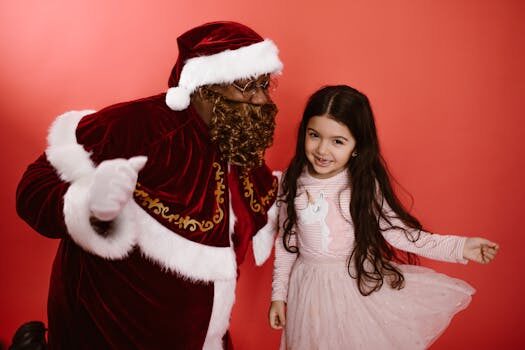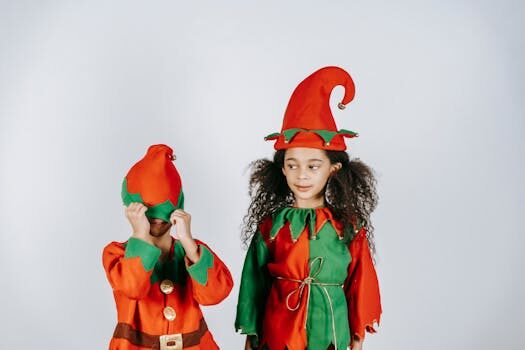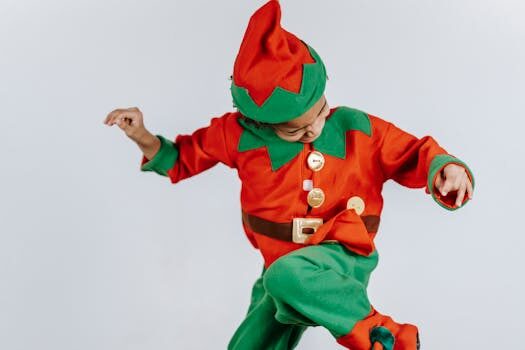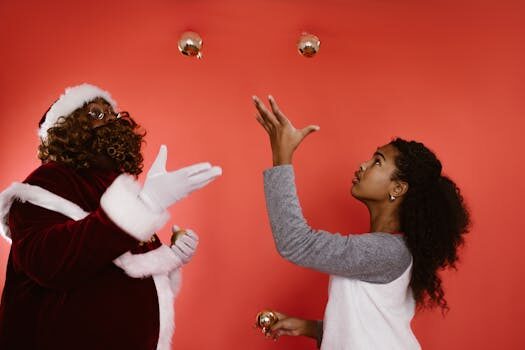Elf on the shelf is racist?

In recent years, the holiday tradition of "Elf on the Shelf" has sparked intense discussions regarding its implications, particularly concerning racial representation. Many parents are questioning the cultural significance of this tradition and whether it aligns with their values. This article delves into the reasons behind the discomfort expressed by many Black parents and examines the broader societal implications.
Why Black parents don't do Elf on the Shelf
The "Elf on the Shelf" tradition has been a beloved holiday custom for many families. However, Black parents often feel excluded from this narrative. The elf, which is predominantly white in design, does not reflect the diversity within family structures and cultural representations. This lack of inclusivity can lead to feelings of discomfort and alienation among Black families.
Many parents argue that the portrayal of the elf reinforces a Eurocentric view of Christmas traditions, thereby marginalizing other cultural perspectives. This exclusion is particularly evident during a season that is meant to celebrate togetherness and joy. Instead of feeling included in festive activities, some parents feel that their cultural identity is overlooked.
In addition, the elf's role as a constant observer raises concerns regarding surveillance behavior. Parents express discomfort with the idea of teaching their children that surveillance is a normal aspect of parenting. This can lead to a culture of control and obedience, which contrasts with the values of trust and communication that many parents strive to promote.
Is Elf on the Shelf racist?
The question "Elf on the shelf is racist?" often arises in discussions surrounding this holiday tradition. Critics argue that the elf's design and concept do not represent the diversity of the population. This oversight raises valid concerns about racial representation in holiday traditions.
Moreover, the overwhelming presence of Eurocentric symbols in popular culture can create an environment where non-white children feel less valued. The absence of Black elves in the product line only exacerbates these feelings. Some families question whether celebrating a tradition that lacks representation is in alignment with their values and beliefs.

Ultimately, the dialogue about whether "Elf on the Shelf" is racist is intertwined with broader discussions about race, representation, and the impact of consumerism on holiday practices. Many families are taking a stand against norms that are exclusionary and are advocating for more inclusive traditions.
Culture, control, colorization, and the elf on the shelf - without ritual, autonomous negotiations
The "Elf on the Shelf" tradition can sometimes be viewed as a mechanism of control within family dynamics. The elf serves as a tool for parents to monitor behavior, which can lead to a transactional approach to discipline. Some families worry that this approach may inadvertently send the message that love and acceptance are conditional upon good behavior.
Colorization is also a crucial aspect of this discussion, as the lack of diversity in holiday traditions can reinforce stereotypes and limit the imagination of children. When children see predominantly white holiday figures, it can shape their understanding of who is valued in society. This reiterates the need for greater representation and inclusivity in children's toys and traditions.
By encouraging autonomous negotiations around holiday practices, parents can create a more meaningful experience that resonates with their cultural values. This shift can allow families to engage in traditions that celebrate their unique heritage, rather than adhering to a one-size-fits-all approach.
Is everyone aware that Elf on the Shelf still doesn’t sell Black elves?
Despite the growing call for inclusivity, it is surprising that Elf on the Shelf has not introduced Black elves. This oversight speaks volumes about the toy industry's understanding of diversity and representation. Many consumers are voicing their disappointment over this lack of options, especially during a time when representation matters more than ever.
Parents are becoming increasingly vocal about the need for products that cater to all children. The absence of Black elves not only alienates Black families but also sends a message that they are not considered part of the target audience. This can lead to feelings of exclusion during a season that is meant to celebrate unity and joy.

As discussions about diversity in children's products continue, it is vital for companies to listen and adapt. The introduction of a wider range of elf options could transform the tradition into one that embraces all families, regardless of their background.
Why do Black parents skip Elf on the Shelf?
Many Black parents choose to skip the "Elf on the Shelf" tradition for several reasons. One primary concern is the lack of representation. The traditional elf does not reflect the diversity that exists within their communities, making the practice feel disconnected from their cultural identity.
Additionally, some families are uncomfortable with the implications of surveillance inherent in the tradition. Parents often prefer to foster trust and open communication with their children, rather than instilling a sense of constant observation.
The decision to forego this tradition is also influenced by a desire to create more meaningful holiday experiences. Many Black families opt for traditions that promote inclusivity and celebrate their heritage, showcasing the rich diversity of their cultures.
What are the concerns about Elf on the Shelf?
The concerns surrounding "Elf on the Shelf" extend beyond representation. Many parents are troubled by the idea of using a surveillance-based approach to parenting. This method can create anxiety in children, who may feel pressured to behave perfectly out of fear of being watched.
Moreover, the commercialization of the elf tradition raises questions about consumerism during the holidays. Some families critique the emphasis on material gifts and the pressure to conform to the latest trends, arguing that this detracts from the true spirit of the season.

Ultimately, the concerns raised by parents highlight the need for a critical examination of holiday practices and their impacts on family dynamics. By addressing these issues, families can work towards creating more inclusive and meaningful traditions.
How does Elf on the Shelf reflect racial representation issues?
The "Elf on the Shelf" tradition serves as a lens through which we can examine broader issues of racial representation in society. The predominance of white imagery in holiday traditions raises important questions about who gets to be part of the narrative.
When families engage with a tradition that lacks representation, it can lead to feelings of inadequacy among children who do not see themselves reflected in these stories. This absence can reinforce harmful stereotypes and create barriers to understanding diversity.
By addressing the racial representation issues within the "Elf on the Shelf" tradition, families can advocate for more inclusive practices that celebrate all cultures and backgrounds. This shift will allow for a richer and more diverse understanding of holiday traditions.
What alternatives are there to Elf on the Shelf?
For families seeking alternatives to the "Elf on the Shelf," there are many options that promote inclusivity and cultural representation. Some families choose to create their own traditions that align with their values and heritage.
- Customized holiday dolls: Families can create or purchase dolls that represent their cultural backgrounds, fostering a sense of belonging and pride.
- Storytelling traditions: Engaging in storytelling can be a meaningful way to celebrate cultural heritage and pass down traditions.
- Acts of kindness: Some families opt for a focus on giving back during the holiday season, participating in community service or donation drives.
- Creating a family advent calendar: This can include activities that celebrate cultural traditions and family values, rather than surveillance.
By exploring these alternatives, families can create meaningful holiday experiences that prioritize representation and connection over conformity.

Questions related to Elf on the Shelf and racial representation
What is the controversy with The Elf on the Shelf?
The controversy surrounding "The Elf on the Shelf" primarily revolves around its implications for racial representation and surveillance behavior in parenting. Critics argue that the tradition predominantly reflects a Eurocentric viewpoint that often excludes non-white families. This raises significant questions about the values that parents want to instill in their children during the holiday season.
Why are people against Elf on the Shelf?
People express discontent with "Elf on the Shelf" for various reasons, including the lack of representation for Black children and the surveillance aspect of the tradition. Many parents feel that the elf promotes a culture of control rather than trust, causing discomfort in family dynamics. Additionally, the commercialization surrounding the elf can detract from the true meaning of the holiday.
What is the meaning behind elf on a shelf?
The "Elf on the Shelf" tradition involves a doll that observes children's behavior during the holiday season and reports back to Santa Claus. While many view it as a fun holiday activity, others critique its focus on surveillance and control. The meaning of the elf, therefore, varies significantly depending on cultural perspectives and parental values.
What is replacing Elf on the Shelf?
Families are increasingly seeking alternatives to "Elf on the Shelf" that emphasize inclusivity and cultural representation. Options such as customized dolls, storytelling traditions, and community service initiatives are gaining popularity. These alternatives allow families to create meaningful traditions that resonate with their values and cultural identities.